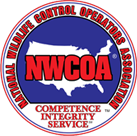FLYING SQUIRRELS
Common Concerns & Safety Issues
Attract other scurries (groups of squirrels) and exposes humans to typhus.
These 4 legged aviators are vectors for disease.
Customers & Locations
Parks
Athletic Fields
Golf Courses
Lake Front Properties
Private Communities
Industrial Sites
Athletic Fields
Golf Courses
Lake Front Properties
Private Communities
Industrial Sites
Business Parks
Townships
County Governments
Boroughs
Schools
Municipalities
Townships
County Governments
Boroughs
Schools
Municipalities
Professional Solutions
- Program design
- Population control
- Seal off all entry points
- Aluminum flashing strips
Understanding the
FLYING SQUIRREL
| Grouping | Seedivore / Omnivore |
| Nicknames | Bat Squirrel, Flying Mouse, Rocky, @#$%^&*! |
| Best Known For | Known to fly from tree to tree and keep people up at night due to extreme racket. Often will drop nuts from heights in the attic. Toilet site animal creating severe stains on house exteriors, interior ceilings and walls. |
| Life Span | 2 to 5 years |
| Mating Season | Spring through Summer. |
| Reproductive Details | After a 20 day gestation period 3 to 8 young are born in a litter. 1 to 2 litters are born per year. |
| Habitat | Mature tree areas that provide a nut and seed crop. Woodlots, big forest areas, mature subdivisions, and urban areas. |
| Activity Cycle | Nocturnal and active year round. Colony squirrels with large extended family units living together. Numbers can exceed 30+ members. |
| Food | Acorns, pine seeds, walnuts, hickory nuts, birdseed, sunflower seeds, eggs (everyone loves an omelet!), immature birds, fruits and fungi. |
| Damage Signs | These animals are known as toilet site animals. Their fecal matter and urine are deposited in a common areas. Black stains in soffit panels, black streaks running down walls, black staining on ceilings, soiled insulation, fecal matter on flat surfaces, scratching at entry points, light chewing on entry points. Will typically migrate in homes from high to low areas (attics down to basements). Entry via the underside of homes (at ground level) does occur. |
| Treatment | Trap and remove from the structure interior and seal all entry points both primary and secondary. Can be excluded from structures by using one way doors after all secondary access points have been sealed. |
| Distinguishing Features | Large, loose, skin flaps between the front and rear legs allowing for glided flight like a kite. Very large eyes and what appears to be lots of mascara! Their size is comparable to that of a chipmunks' and they are tan or rust in color. |
| Risk and Disease | Flying squirrels are known to transmit typhus to humans. They are carriers of parasites and as a result pose a threat to your pet(s). |
| Nests | Nests and den houses (big hollow trees) provide excellent den/nest sites all year long. Flyers will utilize woodpecker holes, gray squirrel chew-ins, and construction gaps not much bigger than a silver dollar. |


Integrated Wildlife Management is our comprehensive and effective one-stop solution. This approach brings together the six necessary elements to successfully resolve wildlife / human conflicts and when possible, safely relocate wildlife to a more suitable habitat.


